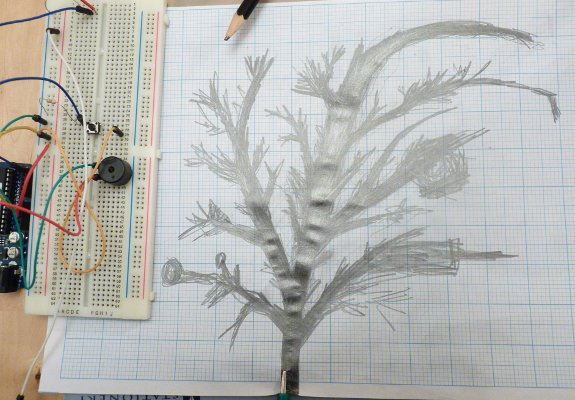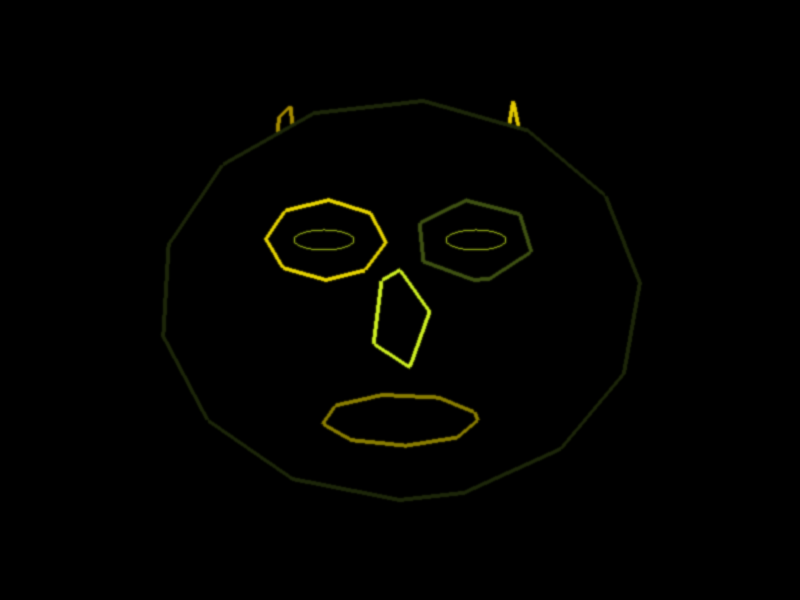Pronounce it Draw-er … one who draws. 😀







Drawer the Explorer (DtE) is intended as a social, interactive digital art work in the form of a “workshop” involving people, computers, printers, paper and pencil, electronics, string and scissors. Within the workshop people will engage in a number of “interactivities” including drawing, watching, printing and listening.
The work draws on the language of video-games, group exploration, map-making. It raises the question as to the nature of exploration and how much alleged “discovery” is, in fact, creation or confabulation by the explorers.
The components of the work are as follows :
- A pencil and graph paper with which people can draw “maps”.
- The pencil is actually electrically connected to an Arduino and circuits can be made between the point of the pencil and the graphite already scribbled on the paper. The Arduino measures the resistance between the pencil and a second terminal and can track the pencil’s movements (at least in one dimension closer-or-further from the other terminal)
- The Arduino drives a small piezzo-buzzer playing a pitch that varies with the resistance of the circuit.
- It also passes the data from the pencil up to a laptop running the main DtE software.
- On the computer, DtE presents a stylized view of an “exploration” in a virtual rainforest where the participants are searching for “artefacts” from a “lost civilization” by moving the pencil.
- Currently, these artefacts are in the form of masks (stylized faces) though in future we can perhaps think of equally interesting alternatives.
- When a mask is “found” through exploration of the virtual forest, the DtE program actually writes an image of it as a PDF file which can then be printed.
- Participants are encouraged to print out the mask shape, cut it out, decorate it further if desired, and wear it.
- Timing and number of participants should really be arranged such that everyone present has a chance to find, print and wear a mask during the workshop. At the end of the session masks and scribbled maps are available for the participants to take away with them as souvenirs of the expedition.
- Movement through the “forest” is controlled by the pencil interface. As the participant scribbles conducting paths on their map, this signals the computer to advance the player in the virtual world.
- In fact, the secret of DtE is that there is no lost civilization inside the program (I know. You’re shocked!) In fact, the signals that the pencil sends are interpreted as “gestures” which feed into an algorithm which generates the mask design algorithmically. Hence there is an ambiguous blurring between “discovery” and “creation”.
- When gestures are recognised by the program, the display of the forest is overlaid by game-like info-graphics. Meanwhile, exploration is accompanied by an electronic sound-track which also signals particular events.
